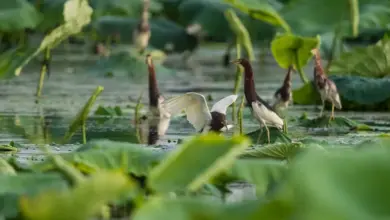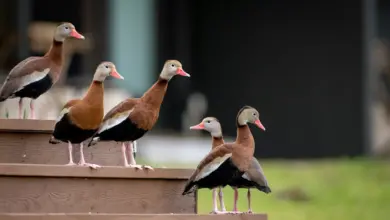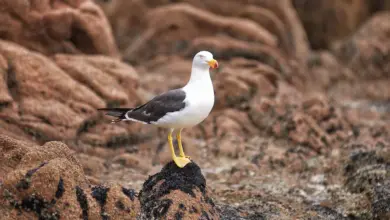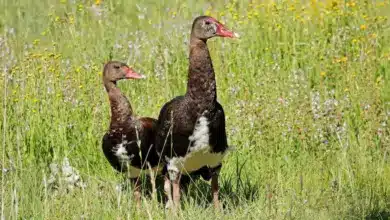Southern Bald Ibises
The Southern Bald Ibises (Geronticus calvus) occur naturally in the open grassland or semi-desert in the mountains of southern Africa.
It can be differentiated from the closely related Northern Bald Ibis of Northern Africa by its reddish face.
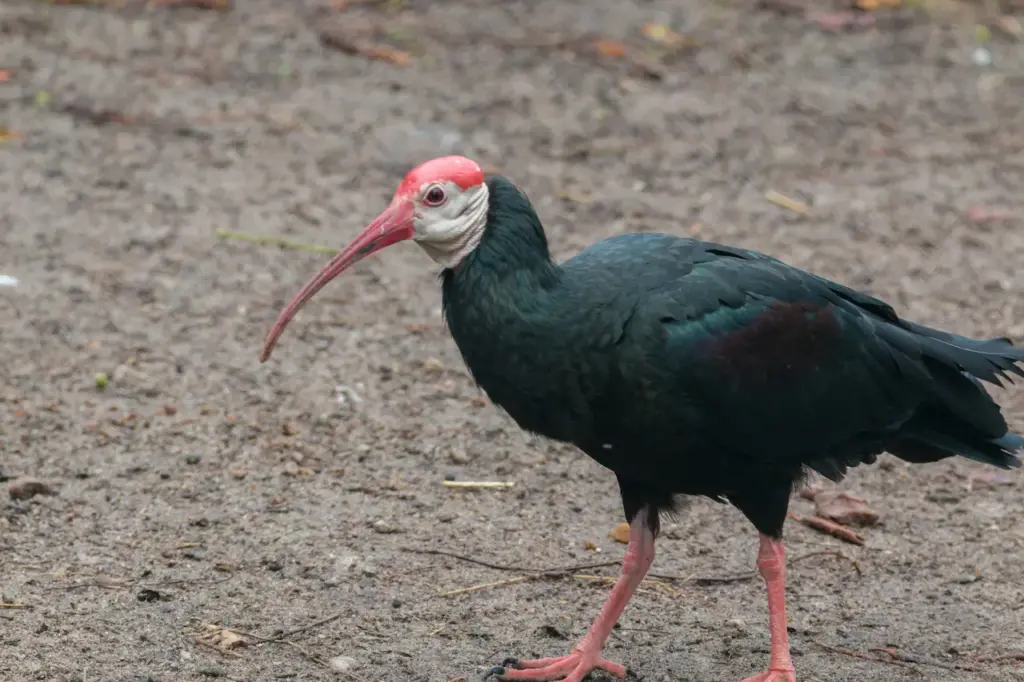
Ibis Information and Listing of Species … Ibis Species Photo Gallery
Description
The Southern Bald Ibis is a large, glossy black ibis that measures 70–80 cm (28–31 in) in length, with a 125–135 cm (49–53 in) wingspan, and an average weight of 1.0–1.3 kg (35–46 oz).
The plumage is mostly glossy black with a bronze-green and violet iridescence. It has a dull redhead and a long, curved red bill.
Males and females look alike, except males tend to be larger than females and have longer bills.
Breeding
The Southern Bald Ibises reach reproductive maturity at age 3 – 5 and once they find their mate, they form lifelong pair bonds.
They breed in loosely spaced colonies on the coast or near rivers.
The male chooses a nest site, prepares it, and then advertises himself to available females by waving his crest and emitting low rumbling calls. In bonded pairs, their bond is reinforced through bowing displays and mutual preening.
Their shallow loosely-constructed, cup-shaped platforms of sticks and grasses are typically situated on cliffs or amongst boulders on steep slopes.
The average nest consists of 2 – 4 oval eggs, which weigh about 50.16 f (1.8 oz) which are 0.93 cm long and 0.68 cm wide (2.37 × 1.73 in). Initially, these eggs are blue-white with brown spots, but they turn brownish during the incubation process.
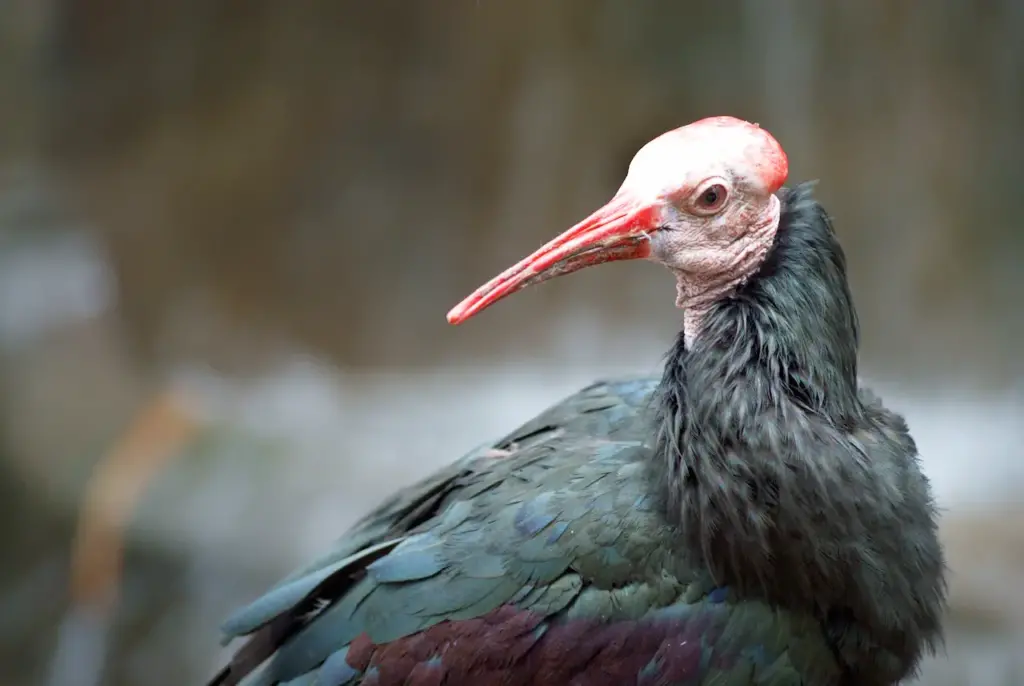
The eggs are incubated for about 24 – 25 days to hatching. Both parents care for the chicks. The young fledge when they are about 40 – 50 days old. They usually take their first flight when they are about 2 months old.
Juvenile Birds
The chicks have a pale brown down. The fledged juveniles look like adults, except the head is dark, the feet are light grey and the bill is pale colored. The unfeathered head and neck turn red as they mature.
Similar Species
The Northern Bald resembles the Glossy Ibis, except the Northern Bald is larger and stockier.
Diet / Feeding
Northern Bald Ibises mostly feed in shallow waters on aquatic insects, mollusks, frogs, and food sifted from the water surface.
Their diet also includes insects (beetles) caught on land, as well as snails, scorpions, spiders, caterpillars, lizards, skinks, and other small reptiles.
Some species will also take small mammals and ground-breeding birds.
They use their long bills to feel for food items in the soil.
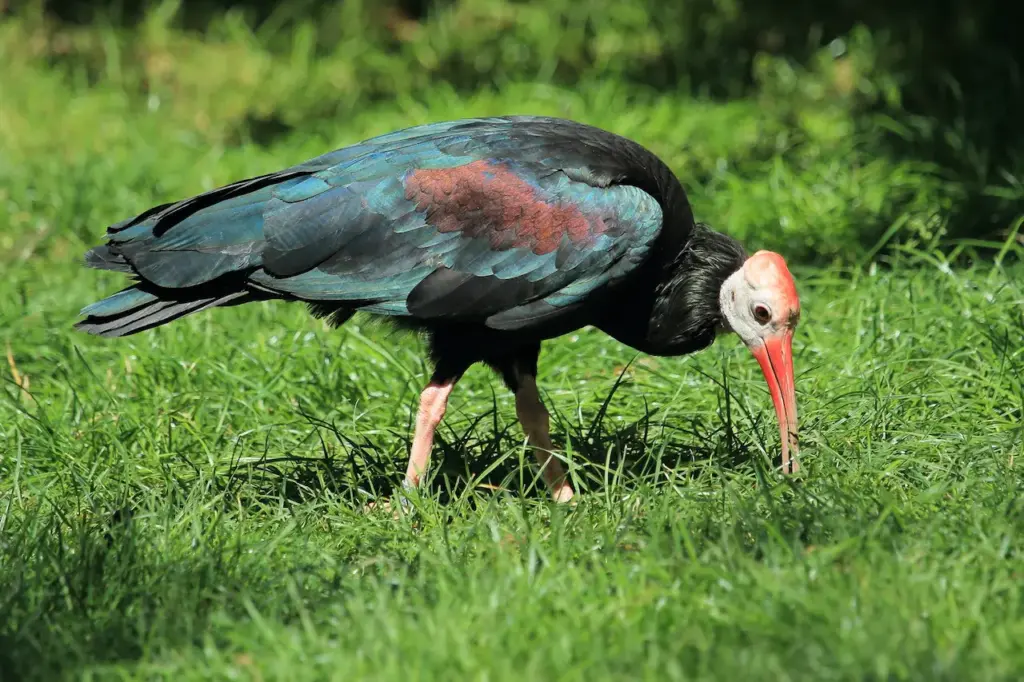
Lifespan
Their lifespan in the wild is estimated to be 10 – 15 years. Captive birds may live to 30 years.

